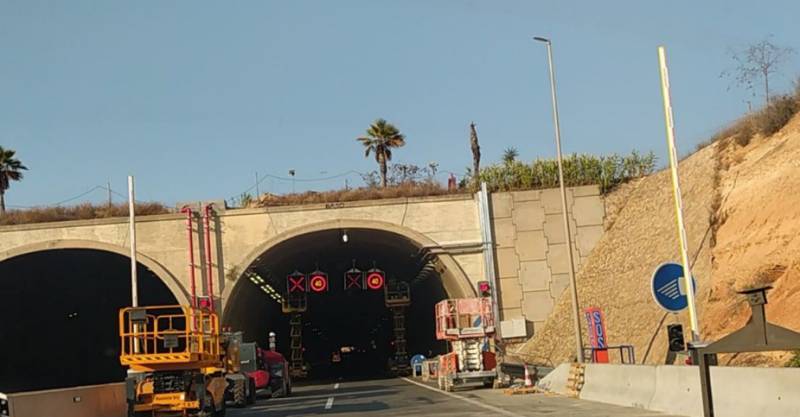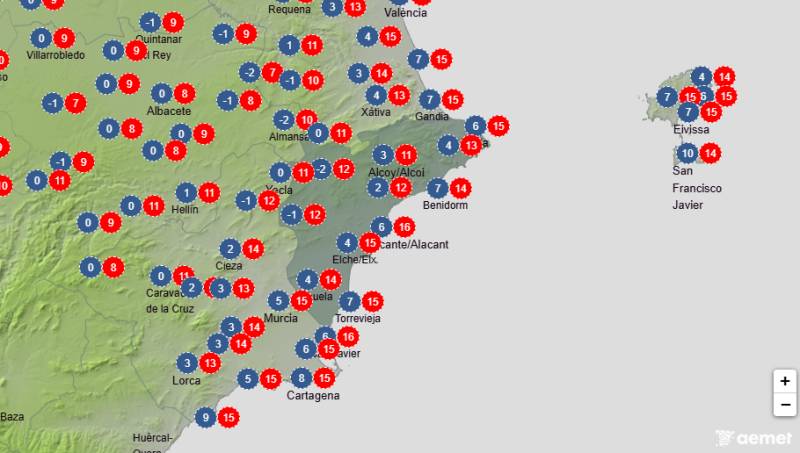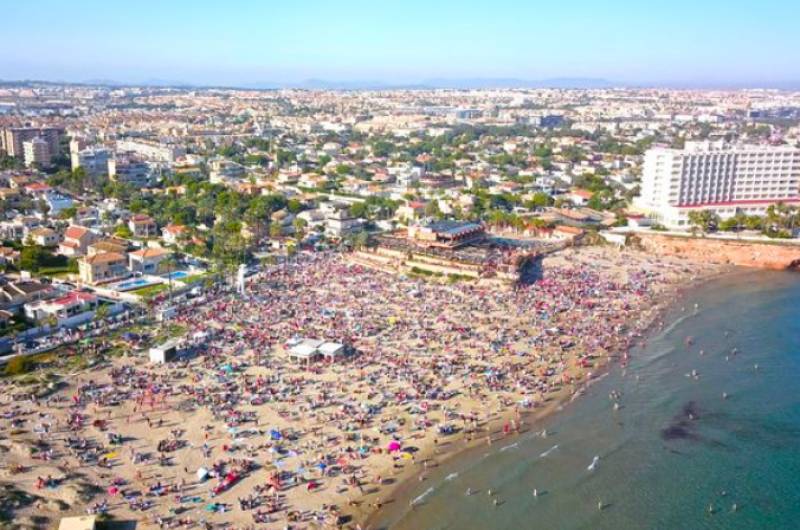
To be listed on the CAMPOSOL TODAY MAP please call +34 968 018 268.
El Barrio de San Roque in Alicante City
Visitors can discover many hidden gems in the typical barrio of San Roque in Alicante old town
When residents and visitors of Alicante city mention ‘El Barrio’, they tend to refer to the ‘Casco Antiguo’ (the old quarter) of the city, which encompasses most of the area extending from the Rambla de Méndez Núñez to the Southern slopes of Mount Benacantil, on which lies the Castillo de Santa Bárbara.
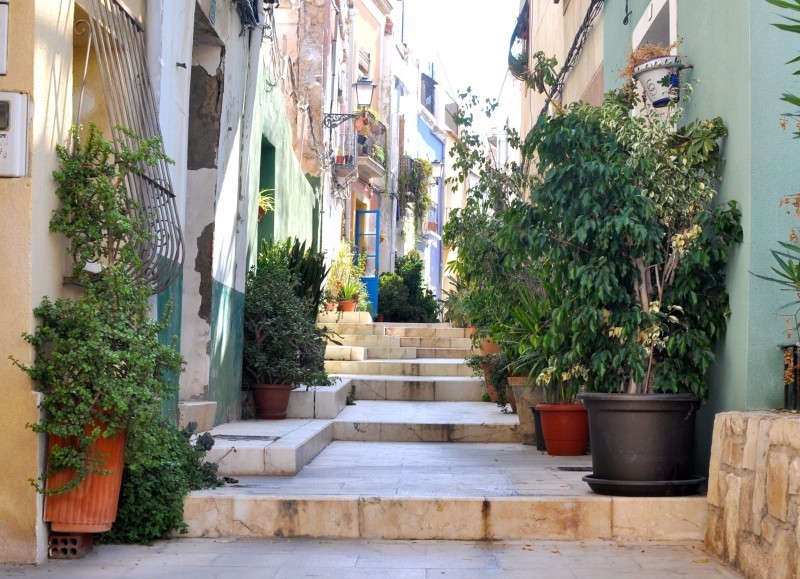
However, the old town area of Alicante is actually divided into three different ‘barrios’, or zones. The most accessible and well known out of the three is called La Vila Nova and this barrio is nearest to the rest of the city centre, backing onto the Rambla de Méndez Núñez and the municipal town hall.
Further up towards the mountain slopes towards the west is the Barrio de Santa Cruz, famous for its narrow residential streets, stone steps and colourful painted houses. Finally there is the tiny adjoining barrio called El barrio de San Roque, situated slightly eastward at the foot of the urban park called El Parque La Ereta in Plaza del Puente. The small area of San Roque is one of the oldest parts of the city, extending from Plaza del Puente to Plaza del Carmen and its most identifiable streets are Calle de Toledo and Calle de San Roque.
Calle de San Roque is home to the oldest chapel in Alicante, the Ermita de San Roque. It was built in 1559 in honour of the fellow patron saint, San Roque who sacrificed his life in helping to cure many people who suffered from the terrible plague outbreak that ravaged the city at the beginning of the 16th century.

Not only was he known for saving the lives of humans, but also for nursing a dying dog back to health. For this reason he is remembered as the protector of humans and animals, and nowadays the images in his honour usually show him accompanied by a dog. The chapel is therefore also referred to as the Santuario (Sanctuary) de San Roque and there is a plaque on which is engraved, “Those who suffer can call for San Roque for help and be cured”.
For this reason the people of San Roque also celebrate the annual Fiestas de San Roque in honour of their fellow patron saint, which take place every year between the 12th and 16th August. During the celebrations the residents of El Barrio de San Roque take part in a number of religious acts including a street procession and an evening mass in the chapel as well as a number of fun activities for the family, from traditional games and live musical performances to flamenco dancing and a paella competition. On 22nd March 2004 the four-day long fiestas were officially recognised as one of the main traditional fiestas of the city of Alicante.
Residents who were born and raised in the barrio de San Roque are therefore proud to call themselves “sanroqueños”, as although this area is part of the Casco Antiguo, they believe that it has its own personality and unique history.

The Barrio de San Roque has always been a modest barrio home to humble, hard- working people. During the 17th and 19th centuries sailors, fishermen and day labourers populated the area before it was abandoned and left to deteriorate for decades. It wasn’t until the 1990s that the barrio was finally revived thanks to the management and rehabilitation plans (Plan RACHA) carried out by the town hall, which involved recuperating the zone and transforming the entire area into an appealing place to live.
Tucked away high above the rest of the bustling city, the barrio de San Roque is considered today to be one of the most attractive and peaceful residential areas in Alicante. Its sloped, narrow streets with stone steps and multi-coloured houses give the area an authentic Spanish charm. All of the balconies and porches of the houses are decorated with plants in pretty flowerpots neatly arranged by proud house-owners, who all treat each other as if they were part of one big family because the barrio is so small.
Another special touch is the paintings, tiles and lines of poetry that cover the walls of houses and shops along the streets. This is an old Valencian tradition that was common in the 18th century, a period when most of the population was illiterate. People used to decorate the walls in their neighbourhood with symbolic images so that visitors could find their way around and identify the houses and shops of different businessmen and craftspeople in the area.
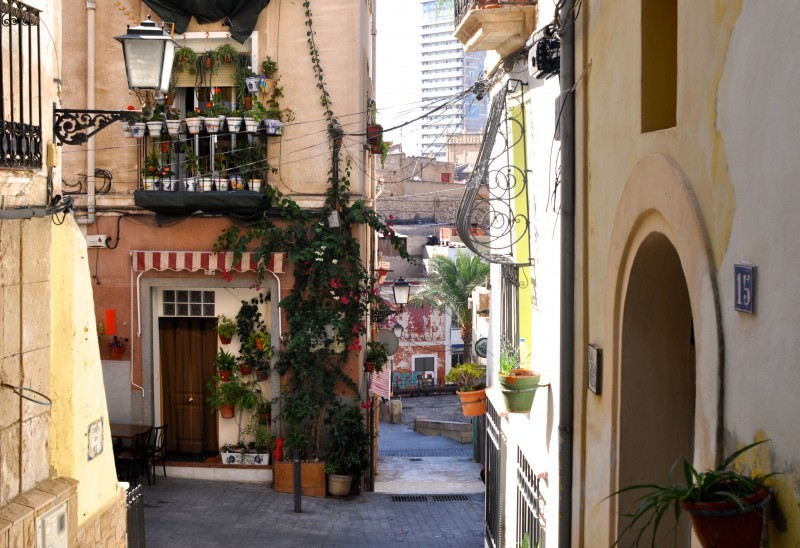
Over the years the barrio de San Roque has maintained its character, with the presence of some old Spanish tabernas and cafés dotted along the streets as well as the absence of motor vehicles in most of the streets due to the fact that some of this area is totally pedestrianized, having been built back when cars didn’t exist.
It has become incredibly popular among couples wishing to have a romantic stroll, art students keen to photograph the walls, and curious tourists on their way back from the Parque la Ereta or the Museo de Aguas, a museum built over the ancient wells of Garrigós, from which water used to be transported via an aqueduct to the Barrio de San Roque, Santa Cruz and the rest of the city.
The Barrio de San Roque can be accessed on foot from the Ayuntamiento (town hall) on Calle Mayor by turning left onto Calle Lonja de Caballeros, taking the steps at the far corner of Plaza Virgin del Remedio, and taking the second set of steps directly in front painted in colourful stripes, which lead up to Plaza del Puente and the entrance to Calle Toledo.
Alternatively the other end of Calle Toledo can be accessed from the top of La Rambla de Méndez Núñez by crossing Plaza de San Cristobal and turning left onto Calle Argensola. This road leads to Plaza de Carmen and the start of Calle Toledo can be located on the far side.
Click here for more information about visiting the City of Alicante, including what's on and where to go: Click for the dedicated Alicante City section











